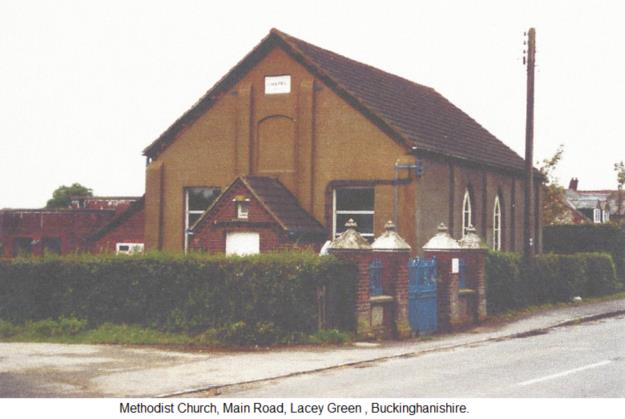

NB: 1940's Lower Rd ended at Loosley Hill and became Little Lane
Today Lower Rd extends to Foundry Lane
In 2013 several members of the History Group went for a walk round the villages with a view to helping them remember what and who was around when they were children. They walked and they talked of the days from 1940's onwards.
We then put their conversation with all the photographs we had of the time to compile several slide sequences pertaining to each street. Some modern pictures were used where we didn't have originals. If you look closely you will see some houses have been extended; others have been demolished and we haven't shown houses that hadn't been built back then. Other Roads - Meadow Rise, Silver Birch Drive, Eastlands and Roundlands, Hets Orchard, Greenlands, Woodfield, Violet Close and Woodbank didn't exist.
These are not professional slide shows, its not David Attenborough. The people speaking however, do have local accents and the narrated slide's proved to be of great interest to those who live in Lacey Green and Loosley Row when first produced. There is some humour and several anecdotes but the sequences are mainly for the historical content.
Virtually 10 years later another
'History Walk Round Lacey Green'
Led by
Rosemary Mortham and Margaret Gray
with different memories and knowedge.
NOTE:
Anything underlined is a link to more on the subject.
Barn, The
Black Firs
Crown Cottages
Crown Public House
Deep Pit
Dew Pond Cottage
Grace Cottage
Gracefield
Grymsdyke
Gryms Ditch
Hambye Close
Hets Orchard
Holly Tree Cottage
Kiln Lane
Lacey Green Farm
Lacey Green School
Lacey House (was Vicarage)
Lane Farm
Malmsmead
Park Cottage
Pondside
St John's Church
Sunny Bank
Vicarage (Lacey House)
Walnut Cottage
Well Cottage
White House Farm
Whitewashings pond
Wimble End
1. Lacey Green Farm
At the entrance to the village from Naphill, once stood Lacey Green Farm. This was a small farm of about 5 acres, constituting the land enclosed by the Main Road and Slad Lane. It consisted of 5 fields, a barn and 4 cottages. It adjoined the Grimsdyke Estate, and was run in conjunction with Speen Farm (The Horses Trust), by Thomas Dell (Senior) and his son. They also owned other places in the village e.g. Vine Cottage.
The son went bankrupt. It is believed that he lost a lot of money in a legal dispute over a hedge. He was already in debt, as he had taken out mortgages for much other land around, e.g. in Denner Hill.
It was sold in 1830, and there was a dispute over ownership. It seems that at this time the farm fell into disrepair. No sign of the bricks from which it would have been built has been found. They were probably recycled for other buildings, possibly the school.
2. Lacey Green School
Started in 1874. The land was purchased from Grimsdyke, and donated by Charles Brown of Stocken Farm, who was then Churchwarden. Originally it was just the flint and brick part at the front. There was a large room on the right, which was also used as the Hall, and a smaller one on the left, which was for many years used by Miss Janes, who retired about 1951. In front of that were two cloakrooms, one for boys and the other for girls. The Main Entrance was up a corridor in the centre which is now blocked off. The toilets were outside, approx. where the new music facility is.
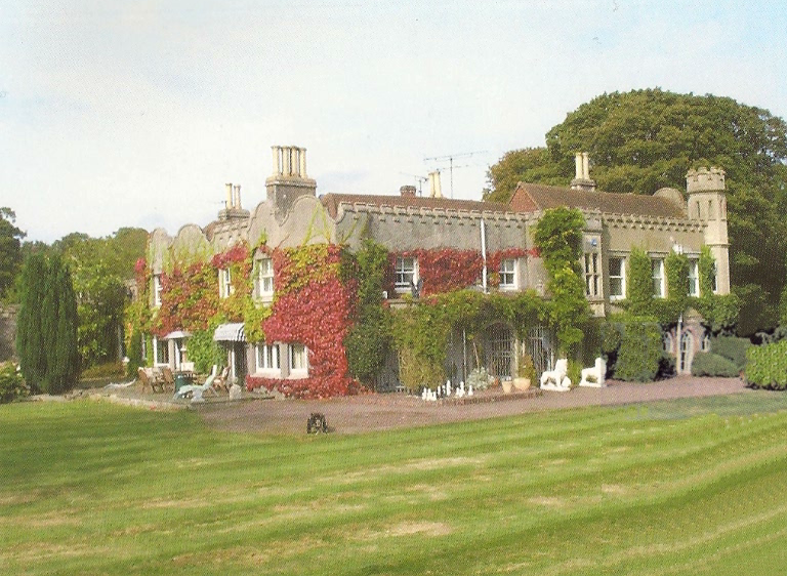
3. Grimsdyke
This is the largest house in Lacey Green. Originally it was a hunting lodge and much smaller. It then became a second country home for wealthy people, with its own farm next door. The farm was later sold off. The last occupants were the Kings, the land was bought by the Wests of Stocken Farm. For many years it had the only well in the village. Other water came from ponds or tanks draining from the roof. Grim's Dyke or Ditch runs through the grounds, although whether it is a continuous earthwork is now disputed. It is thought to be an Iron Age earthwork, perhaps a boundary between the territory of two tribes. It runs for many miles across the Chilterns and the Berkshire Downs. We shall meet up with it again later.
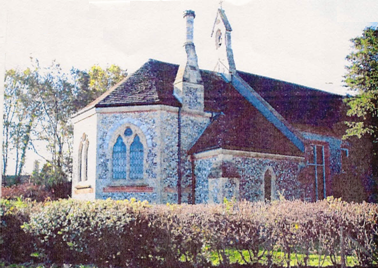
5. St. John's Church
Built in 1824, with a chancel added in 1850. Before that there was no church in the village, but there was a Methodist Chapel, which has since closed, and also an earlier Baptist Chapel in Loosley Row. Church people had to go to church in Risborough, a long walk, and too far for the elderly and infirm.
The lack of a church was one of the reasons submitted in support of the Enclosure of Lacey Green, as the local wealthy stated that the people in Lacey Green were heathen. They put up the money to build the church, and are commemorated by their coats of Arms in the Armorial window now sited on the North of the church, but originally at the West end. In exchange they gained the large amount of common land which had existed in the village, known as The Waste. Some villagers lost their houses, and all were unable to graze their animals on this newly enclosed land.
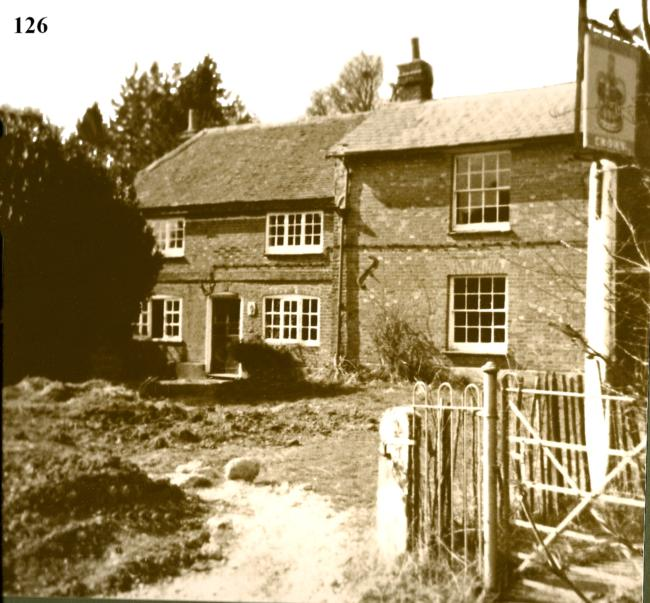
Round the corner now into Church Lane...
6. Crown Cottages
These stand on the site of The Crown public house. Before piped water came to the village, children from the school had to run across the road to get a glass of water from Mrs Brown, the landlady. Her daughter, Kathleen (later married to Harry Church), was the first person in the village to get a scholarship to Wycombe High School. She walked down the footpath from Church Lane to Saunderton Station and caught the train every day. She was only absent when she caught flu.
She later became a teacher, working for a long time at Downley School, which she reached by bicycle across Naphill Common. She was organist at the Methodist Chapel
8. Black Firs
This modern house stands where there was once a very small cottage made of corrugated iron belonging to Nancy Hawes. She was a teacher at the school, and played the organ in church. She gave piano lessons, and kept a very fierce parrot. She and her mother were famed for making fine lace.
9. Wimble End
This was once 3 cottages. For a very short time it was occupied by the well known tennis player, Bunny Austin. The garden was once much bigger. 2 modern houses have been built in it.
10. Lane Farm
Once a real farm, now much extended. The farm workers lived at Wimble End (opposite).. Note the small hand- made bricks in the wall of Lane Cottage opposite.
11. Well Cottage
This was also 3 cottages made of local brick, and belonged to Floyds Farm (behind the Black Horse Pub). They got into an appalling condition. Mr Brett and his mother lived here for a time. She worked at the Vicarage. He remembered rats running in the thatch at night. They were eventually sold just after World War 2, when the labour government fixed rents for rented properties. At the back was a pond, where sadly a little boy drowned. It is now covered by the tennis court of Lane Farm.
12. Hambye Close
Originally this was the site of an Indoor Tennis Court built by the vicar - Revd. Robson for his wife. It was of a very high standard, with a sprung floor, and attracted well know tennis players from Wimbledon. During the Second World War it was used by Austin Hoy - a steel manufacturer, then by Gyproc (manager Mr Knott) and later as a store for Palmer and Harvey sweet makers. Finally it was sold, about 1992, for a housing development, and named Hambye Close after our twinned village of Hambye in Normandy, France.
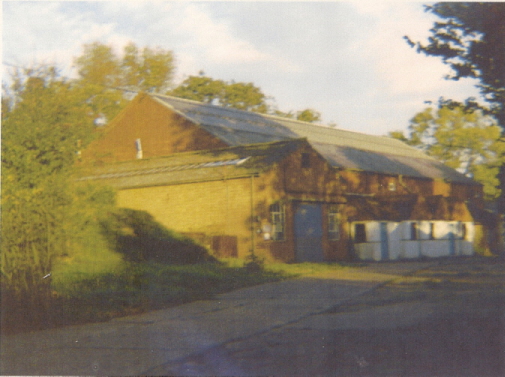
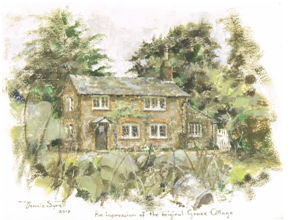
13. Grace Cottage
Once this was two cottages for the servants at Gracefield next door. It was converted into a house for the son of Mr Jordan of Parker Knolls, who lived at Gracefield. The mother of Harold Williams lived here, but when she became pregnant with her illegitimate son, she was asked to leave. Harold became a well -known musician and played the church organ for many years. He was in the RAF during the war. He later developed epilepsy.
Back now into Main road...
14. Gracefield
Built for Miss Grace. The Grace family was a wealthy local family, and gave money to build several local schools and chapels. There is a big memorial to them in Risborough church.
15. Hets Orchard
Across the Main Road from Gracefield. This housing estate stands on the site of a big house called Hets Loo, which is the name of the royal palace in Amsterdam. It was once surrounded by apple orchards, of which there were many in Lacey Green. The original house was occupied by members of the De Beer family, diamond merchants.
16. Kiln Lane
The lane gets its name from the brick kilns, which were built down it. Clay to make the bricks was dug out, and there are still two ponds which were formed by digging out the clay. Small kilns were constructed close to the clay workings. Bricks were fired here in the late 18th century. Those on the outside were heated less, and their colour is paler. Those in the centre can appear almost black. Occasional bricks were decorated with a shiny glaze.
Whitewashings pond is now privately owned and is between Dew Pond Cottage and Holly Tree cottage. You can still see the gate in the hedge. This is where the animals drank. Deep Pit is next door to Pondside, and was where humans got their water. People added lime to make it safe to drink.
17. Malmsmead and Walnut Cottage
Two of the oldest buildings in the village. They date back to the end of the 18th. Century, and were once a farm. The wooden house next door was The Barn. It was rented in the 1930s by two men, Smithson and Sykes, who were notorious burglars. They left from Saunderton Station daily, dressed as business men, and returned with their loot. This was stored in a locked room. The cleaner was surprised by this and alerted police, who eventually caught them near the scene of a robbery with tickets to Saunderton Station in their pockets.
18. Grims Ditch (or Grimsdyke)
Another part of this can be seen to the right of the small crossroads where a modern house called Datcha stands, between the Bridleway and the field.
At the bottom of Kiln Lane was a farm called Sunny Bank. This was bought by the author Rumer Godden (who wrote The Black Narcissus). She enlarged it and painted it White, calling it White House Farm. It has since been returned to flint and brick, and enlarged even further.
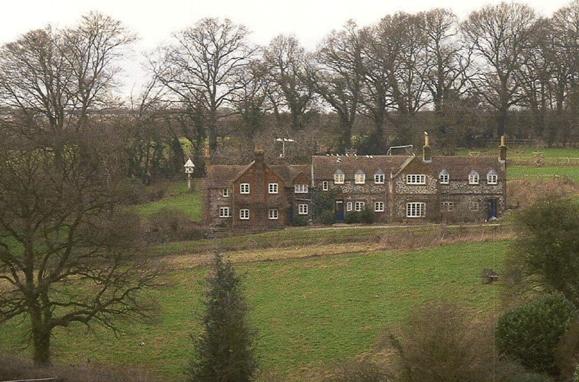
25.09.23
Continuing the
'History Walk Round Lacey Green'
Led by Rosemary Mortham and Margaret Gray
Allotments - Old
Barn Cottage
Bitfield
Crooked Chimneys
Currells Row
Eumana
Floyd's Farm
Hets Orchard
Idle Corner
Kia Cottage
Main Road
Old Allotments
Plum Tree Cottages
Portobello Cottages
Stocken Farm
The Old Thatch
The Reading Room
Village Hall
Vine Cottage
Wayside Cottage
Westlands Road
20. Hets Orchard
Across the Main Road from Gracefield. This housing estate stands on the site of a big house called Hets Loo, which is the name of the royal palace in Amsterdam. It was once surrounded by apple orchards, of which there were many in Lacey Green. The original house was occupied by members of the De Beer family, diamond merchants. The original entrance was from the Idle Corner Turn, where now stands a modern house designed by the architect Randall Evans.
21. Idle Corner
This where the men waited to be offered work. One wonders if they spent quite a lot of their idle time in the Black Horse Pub opposite. Sometimes Called Black Horse Yard, this was part of the old "Up Green". The whole area of Up Green was freehold, and from the late 1700s, it was no longer part of the Manor of Princes Risborough.
22. Barn Cottage
was once a barn for Floyd's Farm. It was here that Mr. Fred Floyd kept his car, a model T Ford - the second car in the village. The first was owned by Mr Hawes of Woodbine Farm. Mr Floyd used his to provide a taxi service to and from Saunderton Station. Before that, it had been used by Miss Elin of Gracefield to house her pony and trap. It is now a house, and another modern house stands between it and the road - Idle Corner Cottage.
23. Vine Cottage
One of the older properties in the village, built in the 1700s. We believe that it was once a pub, as it has a cellar beneath. Pre enclosures, it is listed as a shop selling groceries and beer.
Vine cottage was purchased by Thomas Dell in 1775. He built two cottages onto the Eastern side of it. Cottage 1 was Cosy Cott Cottage 2, name unknown. These were made into one around 1946.
Map of what became known as Idle Corner indicating the location of the buildings listed.
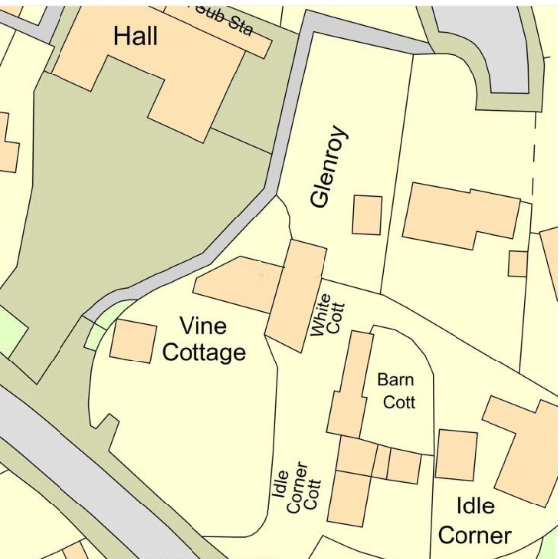
25. Portobello Cottages
A row of tiny Pre Enclosure (1824) cottages - one up and one down originally. They were built on Portobello Meadow, and got their name from a war fought in 1739. The Main Road was built later, and so they do not stand parallel to it. Here lived Mary Adams, a local character, chimney sweep and layer out of the dead.
In 1929 they were sold by the Marchioness of Ely to Howard Carter of Grimsdyke. Looking through the deeds, at least one of them was occupied by 7 members of the same family.
26. The Old Thatch
The only thatched cottage left in Lacey Green, but we know that many properties were once thatched. This was replaced by tiles when the brick kilns were in operation.
27. Crooked Chimneys
This was once a small shop, selling haberdashery. Next to it is a thatched cottage, the only one in Lacey Green, but we know that others were originally thatched, and then changed to tiles, which were made locally. This was once a grocery shop owned by Toey Lacey. It then became a haberdashers circa 1950. It has been much added to.
28. Plum Tree Cottages
Once the home of Tony Adams and is wife, and before that the Hickman family. Another very old property which is not in line with the road. There was once a door in the wall next to the road.
Going back down Main Road we come to...
29. Wayside Cottage
This was once a cottage, and is an example of how small dwellings have been demolished and replaced by large modern buildings. It was once a shop and home of the Biggs family. Another shop a bit further up the road sold fish (Ardengrove). The most well known shop in this small area was Hickman's Stores, run for many years by Bert Dell, and his Uncle Mr Hickman before him.
30. Westlands Road Originally "The Bitfield".
The land on the left was once part of Floyd's Farm. At the bottom are the allotments.
31. Currells Row
Built post Enclosures. Purchased by Free Currell (a family based at Coombs) in 1914.
32. Kia Cottage
Pre Enclosures belonged to Joshua Dell, who bequeathed it to his great nephew James, who left it to Thomas Dell, who died in 1891.
33. Eumana
Originally Rose Cottage and Ye Old Cottage. On the left of the track to Floyd's Farm.
34. Floyd's Farm
Described at its sale as a little old cottage with barn attached. The size of the house and its position suggest that it too is pre enclosures. A 17th century clock and chair were found in it when sold.
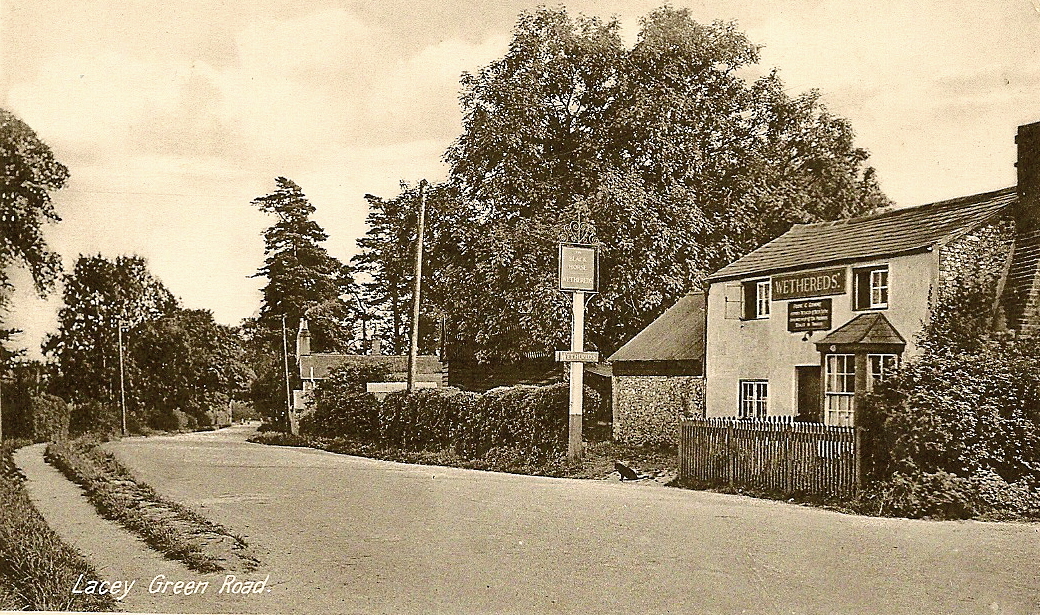
35. The Black Horse
Date uncertain. Originally was an Ale House, and consisted of one room with benches around the walls.
36. Stocken Farm
This is the largest farm in Lacey Green, and was built in 1760. Mr Charles Brown, who lived here, gave the land where the school was built. He allowed the boys to play cricket on his field. In the First World War, the farm was used by the Horse Artillery, and in the Second World War, the field behind the school was used as an airstrip.
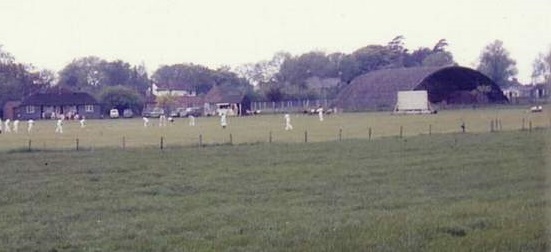
37. Old Allotments
Opposite the farm entrance is a row of modern houses. This was a field when the boys at the school used to grow vegetables on it as part of the 1st World War effort to grow food. It was once part of the common land or "The Waste", which extended over a large part of Lacey Green.
38. Main Road
The main road through Lacey Green once ran round Slad Lane and Church Lane, and ended at the Roundabouts, behind the Village Hall, where Roundlands now stands. There was no road through to Risborough from here. The modern road "The Concrete Road" was built for the RAF in the Second World War.
39. The Reading Room
Now the site of a bungalow called Coolangata. Prior to that were constructed the entrance gates to the airstrip, where Bomber Harris kept his private plane. This replaced the Reading Room, next to the school, which was for men to go and read. They may have been learning or improving their skills. Obviously this was not deemed necessary for women. Towards the end they could go to read the daily newspapers.
25.09.22
Continuing the
'History Walk Round Lacey Green'
Led by Rosemary Mortham and Margaret Gray
This whole area had been a part of the vast area of open land, known as Lacey Green Common, and was a part of Princes Risborough Common. It was crossed by a number of tracks, but the present road lay out did not exist. It belonged to the Manor of Princes Risborough, and cows were brought up here to graze. Up to the end of the 18th century there were no houses in this area with the exception of the Windmill and Windmill Farm (see Bryants map of 1825).
After the Enclosures Act of 1823, things began to change. Cottagers no longer had the right to graze their animals on the common land. The part of the old common stretching from Windmill Farm to Kiln Farm (now Malmsmead) went into the ownership of John Grubb, the former Lord of the Manor.
In 1841, he went bankrupt, and the next owner also went bankrupt in 1848.
The whole area was purchased by John Cheshire (the miller), but he was beset by mortgage debts and began selling off parts of his holding. In 1889 he sold the area where the Bakery once stood, at the end of Goodacres Lane to George Hawes for £46. George built the house later known as Woodbine Farm.
In 1903 he purchased Kingswood Farm in Highwood Bottom, and in 1934 he purchased Stocken Farm from William Saunders. In 1939 he gave Woodbine Farm to his son Harry Hawes
40. Windmill Farm and the Windmill
The History Group has evidence that the Windmill was moved from Chesham to its present position, although this is disputed by some members of the Windmill Association. Certainly in early maps, there is no sign of a windmill here. One did exist further down the hill towards Princes Risborough. Windmill Farm had been in Loosley Row. However in 1823 the roads were altered, and the land where it stood became part of Lacey Green. To this day some of the old residents of Loosley Row accuse the Lacey Green folk of stealing their windmill!
After John Grubb went bankrupt, the farm was bought by Lord Buckingham and Chandos, but in 1848, he also went bankrupt.
The windmill and the farm were sold at auction to John Cheshire. It was described as "A capital Smock Tower Mill, miller's house, and 8 acres of adjoining land. John Cheshire must have bought more land, because in the 1861 census he was said to own 68 acres. In 1923, George left his two daughters, Annie Elizabeth Cheshire and Margaret Cheshire equally "a piece of land known as Long Acre on the Lacey Green Road. No. 199 on the Ordnance map.
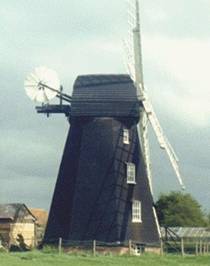

The sails stopped turning in 1923 and the windmill became derelict (see 1956 photo).
In World War 2, the windmill became a lookout point for the Home Guard. They kipped on the second floor, and it was very draughty!
Dorothy Lucy Witcher inherited the farm in 1965 from her aunt Margaret Millward, nee Cheshire. In 1966 it was sold to Les and Rosemary Smith.
In 1971, the windmill was leased by the Chiltern Society and restored by volunteers. Among these was Chris Wallis, whose father Barnes Wallis was instrumental in inventing the bouncing bomb used by the "Dam Busters". In 1983 it was reopened by Bernard Miles, and the sails were working once again. Sadly it has since been found unsafe, and the sails will probably never turn again.
PINK ROAD
To the East of Windmill Farm, and extending down as far as Kiln Lane was a piece of land called ROAD GROUND. Part of this was conveyed to the Chapel of Ease (the church) as Glebe Land. The remainder appears to have been sold off in plots, and the houses on Pink Road were built.
41. The School House
This was built in the 1930s with the £350 obtained from the sale of Loosley Row School. It was held in trust by the Vicar and Churchwardens to be used as a Head Teachers house. The land upon which it was built remained glebe land. The 1939 census shows that it was occupied by William and Florence E Gurney - headmistress.
42. The Whip Public House
Believed to have been built around 1918. Early landlords were also millers at the windmill. Surnames included Steel, Cheshire and Floyd. Formerly a beer house, it was granted a liqueur licence in 1918, to replace the Sprat in Loosley Row.

Back now to Main Road
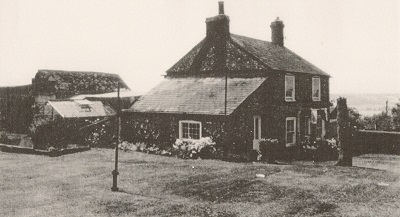
43. The Old Post Office
This was previously known as Hillcroft Dairy. It was run by John and Ethel Lawrence, who came there in 1933. They rented it as a smallholding and dairy. The cows were milked by hand, and the milk delivered by pony and trap. Later a van was used, and milk delivered in bottles. Third of a pint bottles were taken to the school.
Around 1937 the Hickmans built a timber shop on the property. This was stocked with just about everything, and run by Ethel. It was later enlarged to accommodate a Post Office. John was appointed Postmaster in 1952. When his daughter Mary, born in 1940, left Hatters Lane School, she took over running the Post office from her father. In 1970, when he became ill she was appointed sub postmistress. Owing to two armed robberies, she decided to retire. She was honoured by the Post Office for 23 years of service. In 1997 the post office closed for good, and soon after this the old wooden building was demolished.
44. Willow Cottages And Woodfield Cottage
These stand on what was The Common and were part of the 56 acres surrounding Windmill Farm. In 1869, the land was sold by Richard Gibbs of Brill to Free Gomm for £35.10 shillings. It was part of the land owned by Free's father, Richard, called Road Piece. Unfortunately Free could not afford to finish building them, and obtained a mortgage from Edward Grubb.
In 1887, John Cheshire gave the cottages to his daughter Sarah, wife of Joseph George Floyd. In 1908 they passed to George Floyd, and in 1927 to Harry George Floyd. They were described as next to the north side of Woodfield Cottage, which must have been built by then. They were tenanted by Mrs Gomm and H G Rutland. The Woodfield estate was once an orchard belonging to that cottage.
45. Greenlands
This was a council estate built in 1950/51. The development was backed by Rev. Steward, who made himself very unpopular with some of the land owners. Diane Saunders (nee Hutt) remembers moving to 11 Greenlands in 1951. She recalls that there was a copper boiler in the kitchen for the washing. There were two open fires, one in the living room and the other in one of the bedrooms. There was no other form of heating, and no double glazing, so it was very cold in the winter. There was a large garden sloping down the hill.
Councillor Ted Janes moved there and remained for the rest of his life, as did Dorothy Parslow. The District Nurse lived in the first bungalow near the Main Road on the right.
46. Woodbyne Farm
When sold to John Cheshire, the miller, it was described as "All that close of arable land of 15 acres, adjoining Road Ground - lately part of a farm known as Kiln Farm (Malmsmead). John Cheshire was unable to repay a mortgage from Frances Josephine Irving. In 1889 she sold 1 acre of it to George Hawes for £46. The land to the north and northwest was sold to Thomas Owen Stone, that on the northeast to William Saunders, and that on the south and southeast to John Saunders.
In 1892 George Hawes married Anne Morris, and built a house on the plot, which became Woodbyne Farm. He subsequently bought Kingswood Farm and the estate of William Saunders, Stocken Farm. His son Harry Hawes took over the dairy farm. Harry purchased 1 acre of land next to Windmill Farm in 1942.
In 1995, the land was purchased by John West, and the house by Paul and Patricia Johnstone (nee West).
47. Rose Villa
This together with 1 and 2 Jubilee Cottages was built on the land purchase by John Saunders in around 1889. He and his wife Cora lived in Rose Villa. About 1948, Arthur (known as Toey Lacey) bought the property which was in a bad state, with no running water etc. It was inherited by his son George, who moved out in about 1956. Their daughter Edie married Stan Williams and lived at Rose Villa for about 50 years. It had a very long garden which was always immaculate.
48. The Bakery and Bakery Farm (see picture)
The Bakehouse was built in the 1870s for Henry Janes and his wife Mary nee Ginger. He had previously run a Bakehouse at Loosley Row. Their daughter Bethia married William Saunders of Stocken Farm. Their son Hezekiah married Caroline Adams, a widow. They inherited the Bakery.
The third child Annie, born in 1886, married George Floyd. She inherited the shop and Lane Cottages at Loosley Row. Folk would take their Christmas chicken there to be cooked, as their own ovens were not large enough.
The Bakery was later inherited by Hezekaih's son Sidney, who delivered bread and other baked items with his pony and trap well into the 1950s.
Until it was demolished by a local builder, the Old Bakehouse and bread oven was used as a small café for tea, coffee, cakes scones etc.
Hezekiah Janes delivering bread etc

49. Hillcrest (Now Goodacres House)
This was built by William Saunders for his daughter, who sadly died very young. He was renting New House at Denner Hill, and then moved to Stocken Farm. When he died in 1934 the house and land were auctioned. It was described as a commodious residence in its own grounds, well back from the road. Mention is made that "electric light is available in the village and mains water will shortly be available".
50. Field off Goodacres Lane
There was easy access to this 6 acre field for William Saunders from Stocken Farm. He had a barn built in the field and traded in horses before the First World War. George Hawes complained of the mud caused by driving these horses from Stocken Farm.
The field grew a prolific crop of mushrooms. After people had collected them, William would rush in with his donkey and trap, accuse them of trespassing and take the mushrooms off them.
Later the field was purchased by George Hawes.
51. Promised Land Farm
This is now a farm of 100 acres owned by the Turner family. It was bought by Gordon Turner's father Fred in 1958. Previously he had been a tenant of Bristow's Farm in Walters Ash. The farmhouse and yard were built in 1865. The lower part was previously part of the Grimsdyke Estate, and access was from the main Wycombe to Aylesbury Road. The upper 30 acres (near the village) were part of The Common.
When the owners of Grimsdyke went bankrupt in 1910, it was sold off. There were a lot of owners before it was acquired by the Turners. A large part of it was covered in trees. The Grubbins takes its name from when the tree's were all grubbed up. The footpath across the field leading up to Lane Farm was the route taken by the residents of the small hamlet of Coombs to get to church. Later, this became part of the farm.
No one knows where the name Promised Land came from. Kath thinks it might have been a joke, because the land is so poor.
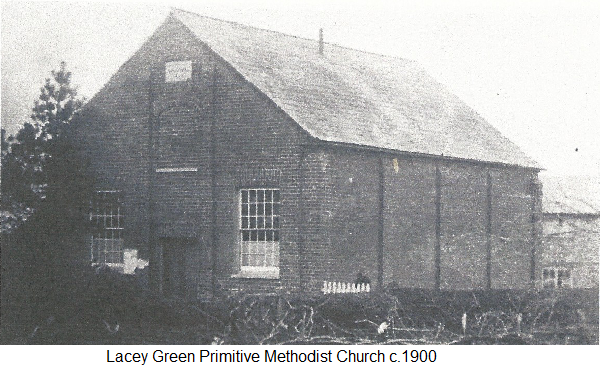
52. Methodist Chapel
The first mention of a place of worship is in William Ginger's house, which was registered in 1835. This is believed to have been Methodist, but could have been Baptist. An outside "Camp Meeting in 1838 lead to rioting and drunkenness in Ginger's Beer Shop (The Black Horse).
There is mention of a building in the Main Road, which could have been on the lane down to Floyd's Farm. It was erected and registered by John Carter Dell, sometime before that, and was described as a poor thatched Chapel. In 1840, John Carter Del left the chapel to his wife Elizabeth (Betsy).
A Methodist Society was founded in 1855. The official opening of the present Chapel was on Sept 23rd. 1855. The day after, a public tea was held for 300 people. It must have been quite a squash! A kitchen was opened in 1870 on land purchased from Elizabeth Janes. A porch was erected in 1909. There was major subsidence over old chalk workings in the 1920s.
Until 1930, the lighting was by candles, and the heating by a tortoise stove and an open fire.
Owen Smith, who died in 1968 had been President for 61 years.
The church closed in 2001, but the cemetery was acquired by Lacey Green Parish Council. By this time Kathleen Church had been organist for 82 years.
This is where our walk ends.
Thank you for joining us.
